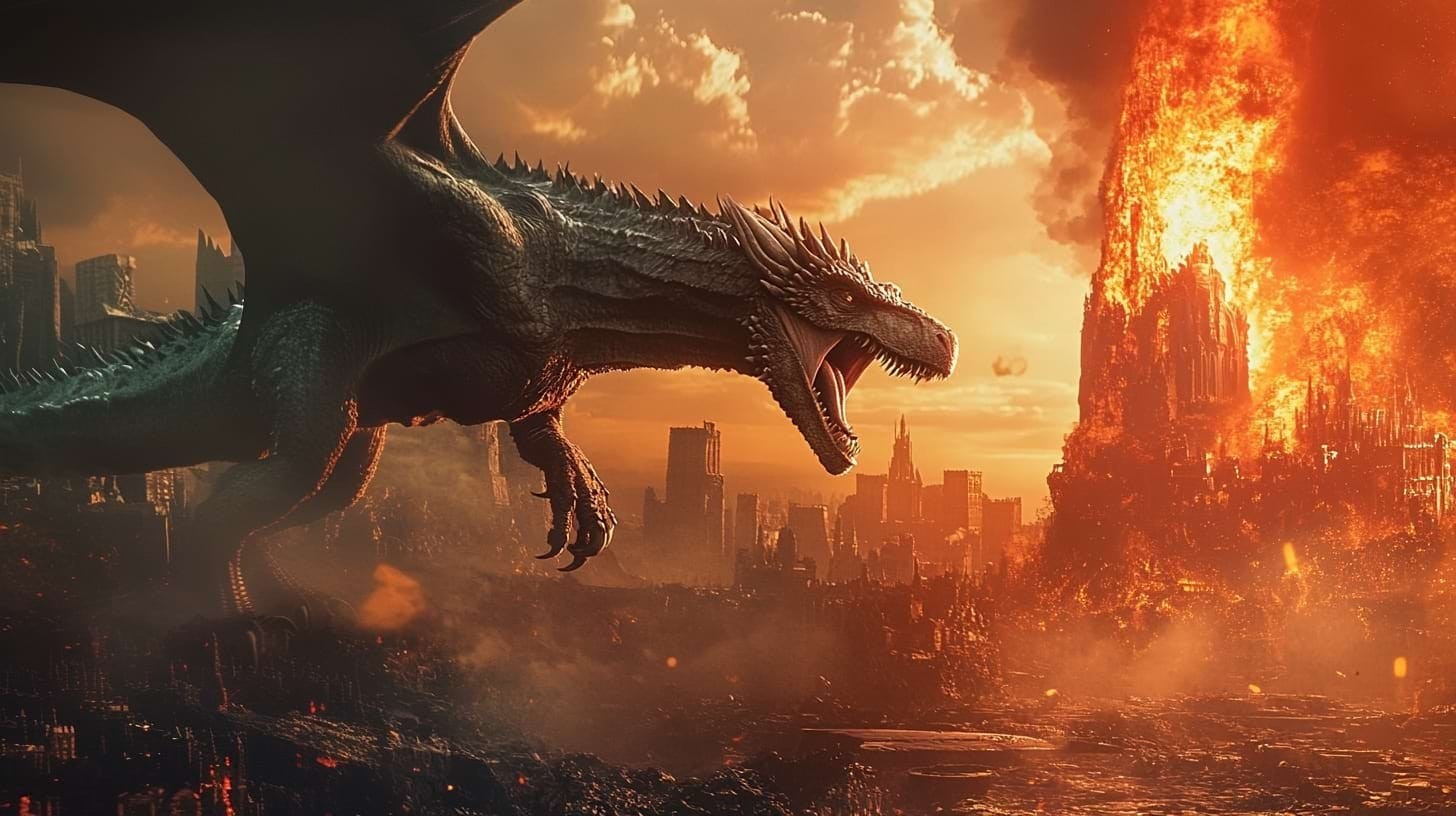How VFX Breakdowns Can Cut Film Production Costs
Behind the veneer of modern cinema lies a financial giant: visual effects. As VFX studios command premium rates for their artistry, filmmakers must compromise between vision and mounting costs. This compromise is transforming the economics of moviemaking in ways few viewers realize.


In this article, we will explore the substantial impact of visual effects on modern film budgets. It's worth noting that professional VFX companies charge up to $5,000 per hour for their industry-standard services.
Visual effects consume 20-25% of a project's total budget in contemporary filmmaking. For smaller productions, the figure might be lower. Whether you're working on an average Hollywood production requiring $65,000,000 or managing complex visual effects like Alice in Wonderland, where individual VFX shots cost approximately $46,000, the financial implications are significant.
Before moving on to detailed solutions, let's explore how VFX breakdowns offer comprehensive features for controlling production costs. This level of detail in pre-production software allows filmmakers to optimize visual effects requirements early, maintaining seamless integration between creative vision and budget management.
Understanding VFX Breakdowns in Film Production
VFX breakdown offers a comprehensive platform for pre-production teams to establish clear guidelines for digital elements. The cloud-based solution helps studios determine resource allocation, schedule creation, and pipeline management.
What is a VFX Breakdown? 🎬
Industry-standard breakdown processes streamline digital artistry into structured components. Pre-production supervisors evaluate script elements to determine enhancement requirements. Moreover, this seamlessly integrates practical and digital components across production stages.
Key Components of Effective VFX Planning 🔑
Successful planning requires these critical elements:
- Technical Requirements: Pipeline infrastructure and software solutions
- Asset Management: Digital asset organization and file structures
- Team Structure: Role assignments for supervisors and artists
- Pipeline Design: Workflow protocols and data management
Impact on Film Production Budget 💰
The pricing structure varies based on project scope. Basic tasks like color grading range from $30-50 hourly. Independent productions typically allocate $5,000-50,000. Advanced tasks including modeling command $300-2,000, while simulation work ranges from $2,000-5,000 per minute.
Large productions face increased expenditure. On-set VFX filming costs $10,000-50,000 daily. Specialized crew members including Directors of Photography earn $200-1,500 per day. Multiple iterations add complexity to budgeting.
Maximize Your VFX Budget!
Start planning smarter with Filmustage.
Creating Detailed VFX Shot Lists
Let's go! The art of building shot lists starts with smart organization. The goal is to break down visual effects into manageable components, focusing on difficulty levels and team needs.
Shot Complexity Assessment 🎥
Building a shot list begins by understanding each element's difficulty. A straightforward shot with simple elements fits in a modest budget range, moreover, intricate sequences with detailed CGI reach higher price points.
Smart planning means looking at key factors affecting final delivery. Teams need to think about artist count, timing needs, quality standards, and delivery dates. Shots needing rich imagery or detailed work call for extra attention.
Resource Requirement Analysis 🛠️
Smart team building starts with finding the right mix of talent. Each project needs specific skills, therefore picking the right people matters. A solid team includes:
- Lead supervisor guiding the work
- Skilled artists handling design and finishing
- Team leads keep work flowing smoothly
Tools and systems play a big role in getting work done. Teams need proper equipment, programs, and support systems. This helps figure out facility costs, which run about $1,000 to $4,000 daily when working with bigger groups.
Looking at computer power and file sharing also matters. This step counts because rendering makes up a big part of the VFX budget, especially with detailed work or big scenes.
Cost Analysis Through VFX Breakdowns
In this article, we will discuss the financial framework of VFX creation. VFX artists receive compensation based on their expertise - entry-level positions start at $50-100 hourly, experienced professionals earn $150-250 hourly, and industry veterans receive $300-1500 hourly.
Breaking Down VFX Expenses 💸
The industry follows distinct pricing tiers. Fundamental tasks begin at $1,000-2,000 per minute, standard projects range between $2,000-5,000 per minute, and sophisticated productions reach $20,000-100,000 per minute. Independent studios offer services at $3,000-10,000 per minute, with established facilities providing solutions at $10,000-30,000 per minute.
The compensation ranges provided are generally in line with industry observations, though actual rates can vary based on factors such as geographic location, project type, and whether the artist is freelance or employed full-time.
Identifying Cost-Heavy Elements 📉
Production expenses increase due to specific requirements:
- Output Resolution: Enhanced image quality necessitates additional processing capabilities
- Advanced Simulations: Incorporating physics-based elements like particle systems
- Application Costs: Essential tools and add-ons for production
- Personnel Structure: Enhanced coordination needs for expanded groups
Optimization Opportunities 💡
Financial efficiency remains achievable while preserving excellence. Cloud services through Amazon Web Services deliver adaptable computational solutions for image processing. LED display environments replace traditional green screens, offering immediate background visualization.
AI-driven solutions present innovative approaches to reduce expenses. Applications like Vanity AI enhance aging modifications efficiently. Pre-made visual components for standard sequences minimize production investments.
Strategic preparation in the initial stages ensures financial oversight. Engaging supervisors at project inception enables precise estimations. Thorough analysis helps discover where practical effects complement computer-generated imagery, delivering optimal results within budget constraints.

Streamlining Production Workflow
In the digital age, cloud-based platforms transform film creation through smart preparation and task distribution. The industry demands tools that bring both artistic vision and financial control together.
Pre-Visualization Benefits 🖥️
Smart preparation acts as a shield against budget overruns. Directors and camera operators gain the freedom to try shots and lighting choices in digital spaces.
The money-saving power of digital preparation shines bright. Production units craft initial versions of difficult scenes, adjusting each element without spending on actual filming. This path shields against mistakes that could drain resources during main photography.
Digital preparation lets teams:
- Explore ideas before spending
- Spot hurdles at the start
- Polish scenes digitally
- Join forces across units
Efficient Resource Allocation ⚙️
Task distribution starts by setting each person's place in the creation chain. The latest tools give producers a bird's eye view of talent placement across locations and ventures. This method spots where people have too much or too little on their plates, creating harmony in workloads.
Fresh tools paint a clear picture of who can handle more tasks and who needs breathing room. Leaders can shift assignments as needed using instant updates, keeping everyone moving at the right pace. Following smart distribution methods brings real gains.
Smart planning touches every corner of creation. Digital storage keeps every piece - from computer models to image files - in perfect order, ready for any scene. This central hub cuts down repeat work and holds quality high throughout filming.
Modern Tools for VFX Breakdown
Industry-standard software offers various subscription plans that integrate powerful features into cost-effective solutions. Professional studios rely on integrated review tools to enhance their operations.
Software Solutions for Breakdown Creation 📝
Modern film production demands sophisticated VFX breakdown solutions, and Filmustage changes fundamentally this crucial aspect by automating what was once a painstaking manual process. Unlike traditional software that requires individual element tagging, Filmustage's innovative platform generates comprehensive VFX sequences with a single click, transforming how production teams approach visual effects planning.
The platform stands out through its seamless integration of action-based descriptions and instant spreadsheet export capabilities, enabling production teams to make well-informed decisions quickly. By automating comprehensive VFX breakdowns, Filmustage eliminates tedious manual tagging while maintaining precise detail and accuracy. Its cloud-based infrastructure facilitates real-time collaboration between supervisors and artists, streamlining department communication.

What truly sets Filmustage apart is its ability to translate complex VFX requirements into organized, actionable data that integrates smoothly with existing workflows. The platform's flexible export options and Excel compatibility ensure that VFX planning remains adaptable throughout production, while its detailed sequence generation helps teams maintain both creative vision and budget control.
Automation and Efficiency Gains ⚡
AI-powered tools have transformed production pipelines, as demonstrated by CopyCat in Nuke which allows custom model training. This advancement reduces manual work time significantly.
Modern tracking systems incorporate advanced algorithms for accurate estimations. By analyzing data patterns, studios maintain tighter control while optimizing resources effectively.
Cloud solutions minimize technical constraints in production. Through distributed processing, teams achieve faster results while reducing equipment expenses.
Real-time rendering engines support on-set visualization, enabling immediate creative choices. This approach helps prevent costly revisions during later stages.
Conclusion
Film studios today recognize breakdowns as vital instruments for managing finances. By examining each element beforehand, teams pinpoint where to direct funds wisely.
New software tools and AI capabilities open fresh paths in film creation. Studios of every size now access methods previously limited to big-budget ventures. By mixing practical filmmaking approaches with computer assistance, projects find ways to stretch available funds further.
Looking ahead, film technology continues evolving toward wider reach and improved value. LED stages, AI support, and forward-thinking methods reshape how projects handle their means. The path to engaging imagery lies in thorough examination, mindful fund placement, and attentive oversight - fundamentals that guide ventures of any scale toward their artistic goals while respecting financial boundaries.
From Breakdown to Budget in Clicks
Save time, cut costs, and let Filmustage’s AI handle the heavy lifting — all in a single day.